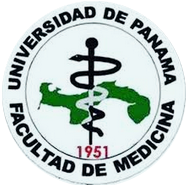Diagnóstico y abordaje inicial del niño y adolescente con hipertensión arterial
[Diagnosis and initial approach to children and adolescents with arterial hypertension]Basilio Dobras1
1. Hospital de Especialidades Pediátricas, Caja de Seguro Social, Panamá, Rep. de Panamá.
Descargas
Resumen
La hipertensión arterial es uno de los factores de riesgo modificable involucrados en el desarrollo de la enfermedad cardiovascular (ECV). Si bien la prevalencia de HTA en niños es baja (alrededor de un 3.5%) en relación a la prevalencia en el adulto, algunos estudios sugieren que al iniciar en edades pediátricas el riesgo de ECV en la etapa adulta se incrementa, de modo que su detección y manejo temprano contribuiría a disminuir el riesgo de ECV en etapas más avanzadas de la vida. Dado que la ECV se ha constituido en las últimas décadas en la causa individual más frecuentes de morbilidad y mortalidad prematura en adultos a nivel mundial, algunas sociedades pediátricas como la Sociedad Europea de Hipertensión en Niños y Adolescentes (ESH), y la Academia Americana de Pediatría (AAP) se han hecho eco de iniciativas para el manejo de HTA, estableciendo guías prácticas clínicas para su diagnóstico y abordaje oportuEl presente artículo comprende una revisión de la literatura médica respecto a la hipertensión arterial en niños y adolescentes la cual resume las pautas útiles y actualizadas para la evaluación apropiada de la presión arterial y el abordaje inicial de la hipertensión arterial, lo cual incluye las definiciones, técnicas para el diagnóstico establecidas, así como el tratamiento inicial de la hipertensión arterial en niños y adolescentes.
Abstract
Arterial hypertension is one of the modifiable risk factors involved in the development of cardiovascular disease (CVD). Although the prevalence of hypertension in children is low (around 3.5%) in relation to the prevalence in adults, some studies suggest that when it starts in pediatric age, the risk of CVD in adulthood increases, so that its early detection and management would contribute to reducing the risk of CVD in later stages of life. Given that CVD has become the most frequent single cause of morbidity and premature mortality in adults worldwide in recent decades, some pediatric societies such as the European Society of Hypertension in Children and Adolescents (ESH) and the American Academy of Pediatrics (AAP) have taken initiatives for the management of hypertension, establishing practical clinical guidelines for its diagnosis and timely management. The present article comprises a review of the medical literature regarding hypertension in children and adolescents that summarizes useful and up-to-date guidelines for appropriate blood pressure evaluation and initial management of hypertension, including definitions, established diagnostic techniques, and initial management of hypertension in children and adolescents.
Citas
[1] Benjamin EJ, Blaha MJ, Chiuve SE, et al; American Heart Association Statistics Committee and Stroke Statistics Subcommittee. Heart disease and stroke statistics-2017 update: a report from the American Heart Association [published correction appears in Circulation. 2017;135(10):e646; Circulation. 2017;136(10):e196]. Circulation. 2017;135(10):e146–e603[PubMed]
[2] Shen W, Zhang T, Li S, et al. Race and sex differences of long-term blood pressure profiles from childhood and adult hypertension: the Bogalusa Heart Study. Hypertension. 2017;70(1):66–74[PubMed]
[3] Litwin M. Why should we screen for arterial hypertension in children and adolescents? Pediatr Nephrol (2018) 33:83–92 DOI 10.1007/s00467-017-3739-8
[4] Salas P. et al. Rev Chil Pediatr. 2019;90(2):209-216 DOI: 10.32641/rchped.v90i2.1005
[5] Lurbe E, Agabiti-Rosei E, Cruickshank JK, Dominiczak A, ErdineS, Hirth A, et al. 2016 European Society of Hypertension guide-lines for the management of high blood pressure in children andadolescents. J Hypertens. 2016;34:1887---920.3.
[6] Flynn JT, Kaelber DC, Baker-Smith CM, Blowey D, Carroll AE,Daniels SR, et al. Clinical practice guideline for screening andmanagement of high blood pressure in children and adolescents.Pediatrics. 2017;140:e20171904.4.
[7] Rabi DM, McBrien KA, Sapir-Pichhadze R, Nakhla M, Ahmed SB,Dumanski SM, et al. Hypertension Canada’s 2020 Comprehen-sive Guidelines for the Prevention, Diagnosis, Risk Assessment,and Treatment of Hypertension in Adults and Children. Can Cardio. 2020;36:596---624.
[8] Brady T, Stefani-Glücksberg A, Simonetti G. Management of high blood pressure in children: similarities and differences between US and European guidelines. Pediatric Nephrology (2019) 34:405–412. https://doi.org/10.1007/s00467-018-3946-y
[9] Guzman-Limon M, Samuels J. Pediatric Hypertension Diagnosis, Evaluation, and Treatment. Pediatr Clin N Am 66 (2019) 45–57. https://doi.org/10.1016/j.pcl.2018.09.001
[10] Salas P et al. Hipertensión arterial en la infancia. Recomendaciones para su diagnóstico y tratamiento. Parte 1. Rev Chil Pediatr. 2019;90(2):209-216 DOI: 10.32641/rchped.v90i2.1005
[11] Florian D, McCarthy F, De León L. Hipertensión Arterial en niños y adolescentes: una perspectiva en constante evolución. Pediatr Panamá 2016; 45 (1): 7-15
[12] Hamby T, Pueringer M, Noorani S, Khanna A, Barrow J, Razzouk R. Time to referral to a nephrology clinic for pediatric hypertension. Pediatric Nephrology (2020) 35:907–910. https://doi.org/10.1007/s00467-020-04490-x
Licencia
Derechos de autor 2024 Infomedic Intl.Derechos autoriales y de reproducibilidad. La Revista Médica de Panama es un ente académico, sin fines de lucro, que forma parte de la Academia Panameña de Medicina y Cirugía. Sus publicaciones son de tipo acceso gratuito de su contenido para uso individual y académico, sin restricción. Los derechos autoriales de cada artículo son retenidos por sus autores. Al Publicar en la Revista, el autor otorga Licencia permanente, exclusiva, e irrevocable a la Sociedad para la edición del manuscrito, y otorga a la empresa editorial, Infomedic International Licencia de uso de distribución, indexación y comercial exclusiva, permanente e irrevocable de su contenido y para la generación de productos y servicios derivados del mismo. En caso que el autor obtenga la licencia CC BY, el artículo y sus derivados son de libre acceso y distribución.









